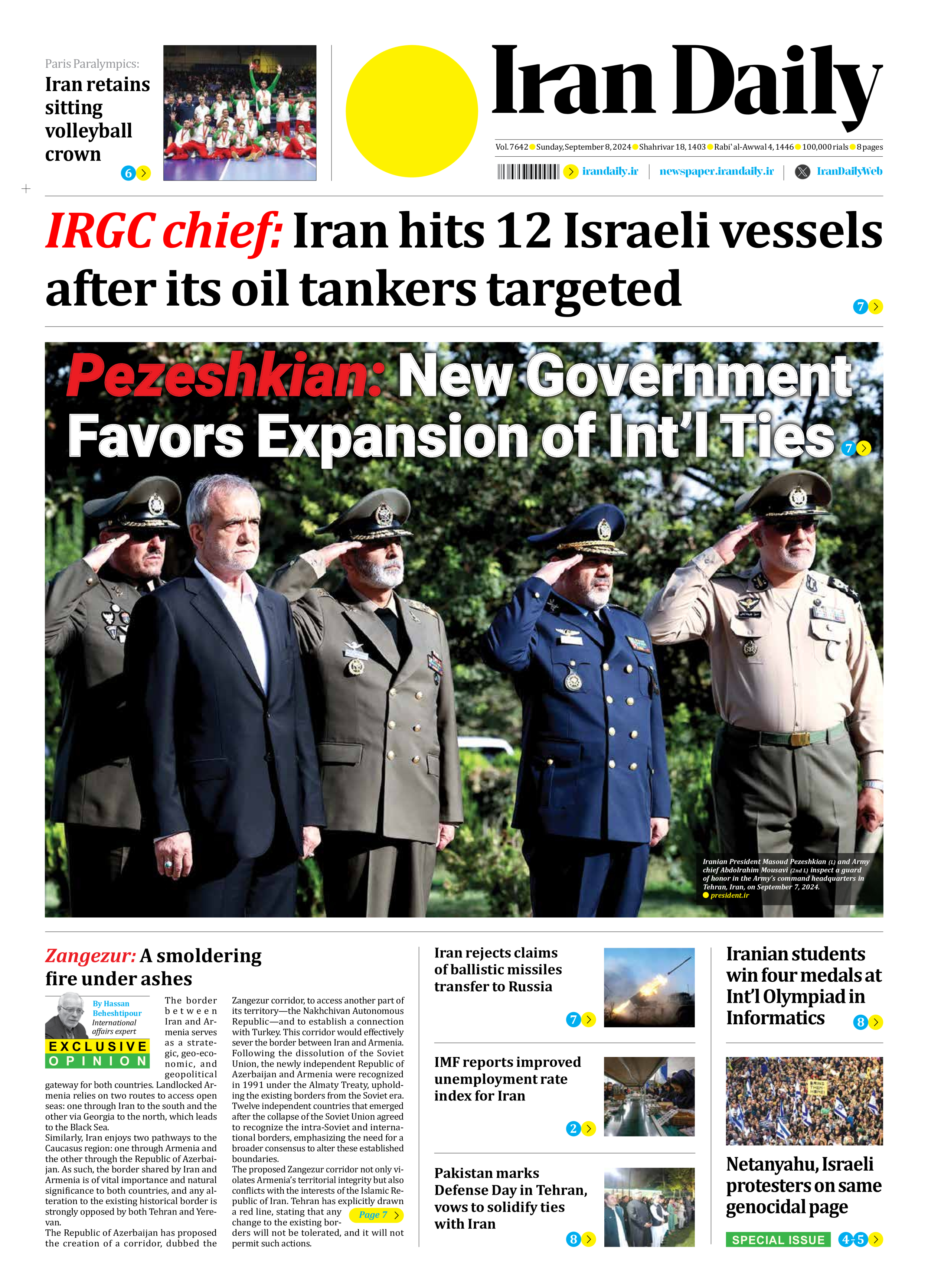
Zangezur: A smoldering fire under ashes
By Hassan Beheshtipour
International affairs expert
The border between Iran and Armenia serves as a strategic, geo-economic, and geopolitical gateway for both countries. Landlocked Armenia relies on two routes to access open seas: one through Iran to the south and the other via Georgia to the north, which leads to the Black Sea.
Similarly, Iran enjoys two pathways to the Caucasus region: one through Armenia and the other through the Republic of Azerbaijan. As such, the border shared by Iran and Armenia is of vital importance and natural significance to both countries, and any alteration to the existing historical border is strongly opposed by both Tehran and Yerevan.
The Republic of Azerbaijan has proposed the creation of a corridor, dubbed the Zangezur corridor, to access another part of its territory—the Nakhchivan Autonomous Republic—and to establish a connection with Turkey. This corridor would effectively sever the border between Iran and Armenia.
Following the dissolution of the Soviet Union, the newly independent Republic of Azerbaijan and Armenia were recognized in 1991 under the Almaty Treaty, upholding the existing borders from the Soviet era. Twelve independent countries that emerged after the collapse of the Soviet Union agreed to recognize the intra-Soviet and international borders, emphasizing the need for a broader consensus to alter these established boundaries.
The proposed Zangezur corridor not only violates Armenia’s territorial integrity but also conflicts with the interests of the Islamic Republic of Iran. Tehran has explicitly drawn a red line, stating that any change to the existing borders will not be tolerated, and it will not permit such actions.
Page 7







